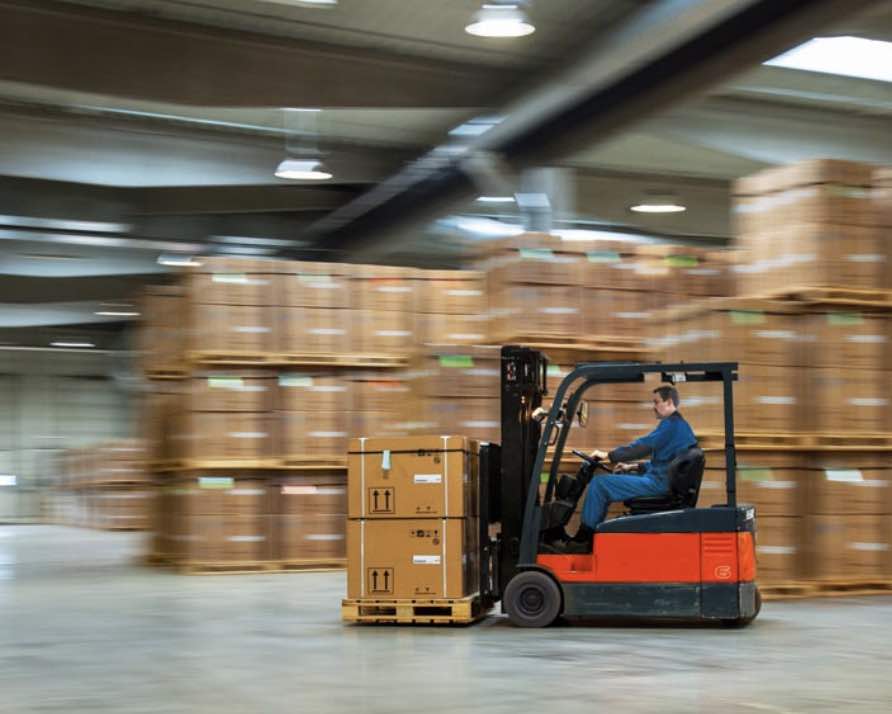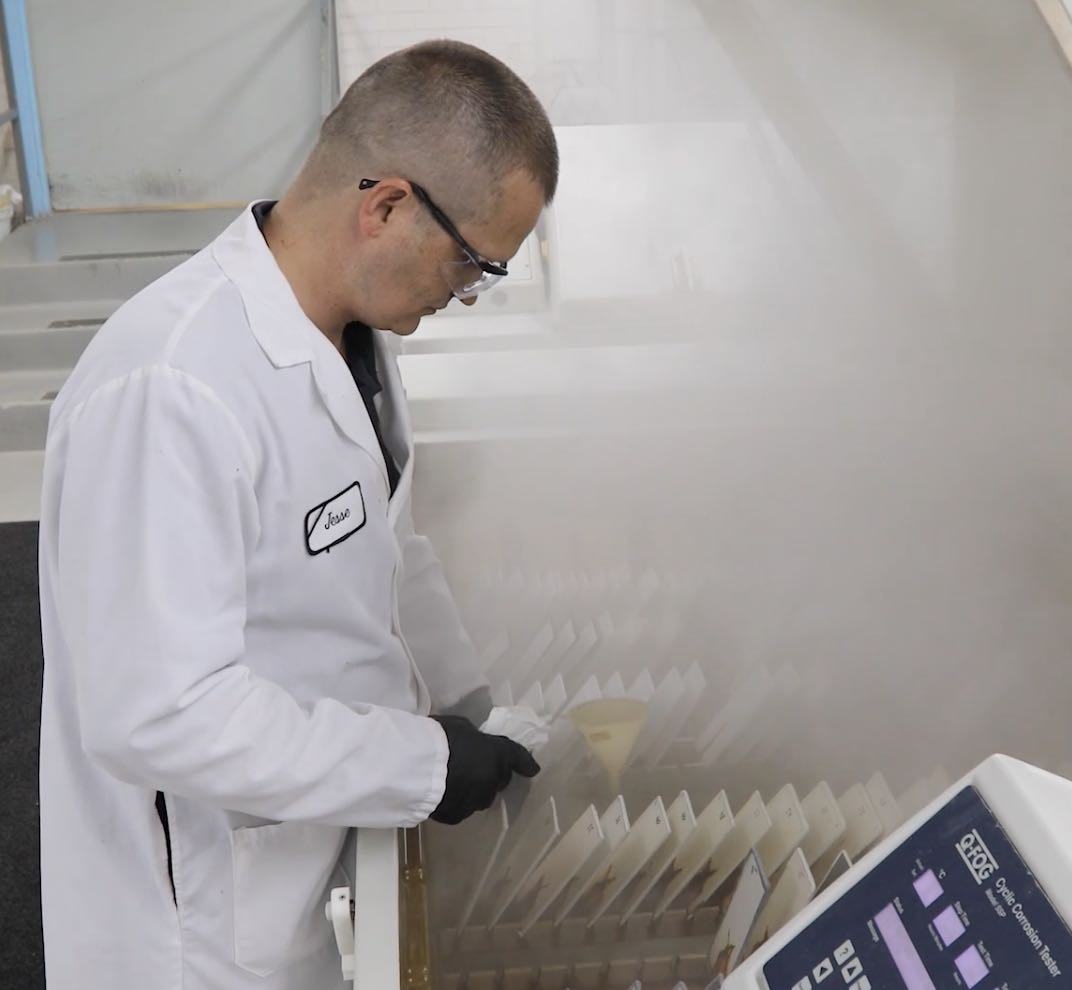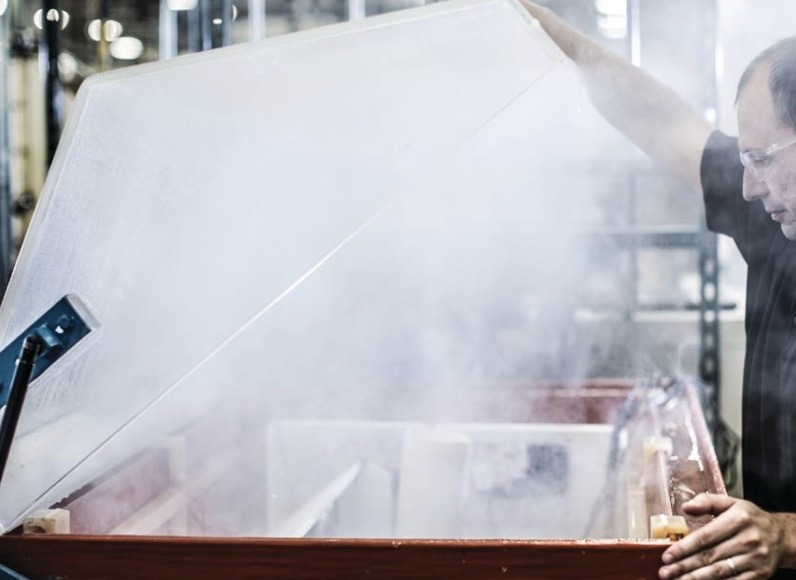
What is ASTM D4060 and Why is Abrasion Resistance Important?
Learn about ASTM D4060 and why abrasion resistance is critical for coating durability in high-traffic and abrasive environments. Discover how testing ensures long-term protection and performance.
- High Performance Coatings
Why is testing the abrasion resistance of coatings important?
Abrasion resistance is a crucial property of coatings, as it significantly influences the overall durability and longevity of the coating system. This is especially true in environments that experience high levels of foot or vehicular traffic, or in areas where surfaces are frequently exposed to abrasive wear and tear. In such settings, the ability of a coating to withstand abrasion can determine how well it performs over time, maintaining its protective qualities and aesthetic appearance. To accurately assess this property, ASTM D4060 is employed as a standard test method. This method involves subjecting the coating to a rotating wheel equipped with abrasive particles, simulating the wear and tear that the coating would encounter in real-world conditions. By doing so, it provides a reliable measure of the coating's resistance to abrasion, helping manufacturers and users make informed decisions about the suitability of a coating for specific applications.
Abrasion can damage and wear coatings prematurely
The ability of a coating to resist abrasion is of paramount importance because abrasion can inflict various forms of physical damage to the coating, such as scratching, scuffing, or the gradual wearing away of the surface layer. These types of damage can compromise the integrity of the coating, leading to a significant reduction in its protective properties. For instance, a compromised coating may lose its effectiveness in preventing corrosion, which is the gradual degradation of materials due to chemical reactions with environmental elements. Similarly, the coating's ability to withstand weathering, which involves the breakdown of materials due to exposure to atmospheric conditions like sunlight, rain, and wind, can be diminished. Furthermore, the coating's resistance to chemical attack, which involves the deterioration of materials due to exposure to harsh chemicals, can also be adversely affected.

Abrasive environments require abrasion resistance coatings
In addition, abrasion resistance is particularly crucial in applications where the coated surface is consistently or repeatedly exposed to abrasive materials. These materials can include dirt, sand, or gravel, which are often encountered in various industrial and environmental settings. For example, in the case of a potable water tank, the top or bottom surfaces may frequently come into contact with silt, pebbles, and rocks, which can cause significant wear over time. In processing equipment, where mixers or screw conveyors are involved, the surfaces are often exposed to abrasive materials that can wear down the coatings. These examples illustrate the diverse range of scenarios where abrasion resistance is essential, and the list of such applications goes on and on, highlighting the widespread need for coatings that can withstand abrasive forces.
Floor coatings are subjected to continuous abrasion
Floor coatings in manufacturing, chemical, and processing plants can be subjected to constant abrasion due to the relentless movement of forklift traffic and the rigorous demands of various manufacturing processes. For example, in a bustling manufacturing facility, forklifts are continuously transporting heavy loads across the floor, which can lead to significant wear and tear on the coating. 
The repeated passage of these vehicles, often carrying sharp or heavy materials, can cause scratches, scuffs, and other forms of damage that gradually degrade the coating's surface. Additionally, in chemical plants, the floors are frequently exposed to spills and splashes of corrosive substances and slurries, which can further exacerbate the abrasion and lead to the deterioration of the protective layer. Similarly, in processing plants, the constant movement of machinery and equipment, along with the presence of abrasive particles like dust and debris, can contribute to the ongoing abrasion of floor coatings. These examples highlight the critical need for durable, abrasion-resistant coatings that can withstand these harsh conditions and maintain their protective and aesthetic qualities over time.
Manufacturers should use abrasion resistance testing (ASTM D4060) during material design
By measuring the abrasion resistance of coatings according to the standardized test method ASTM D4060, manufacturers and users gain valuable insights into the performance characteristics of different coating materials. This testing process involves subjecting the coatings to controlled abrasive forces, which helps in evaluating how well they can withstand wear and tear in real-world conditions.

As a result, manufacturers can make informed decisions when selecting coatings that are better suited for specific applications, ensuring that the chosen coatings will effectively maintain their protective properties, such as preventing corrosion and resisting environmental degradation, over extended periods. This is particularly important in industries where the longevity and durability of coatings are critical to operational success and safety.
Furthermore, for those seeking expert guidance in determining which abrasion-resistant products might best meet the unique requirements of their specific projects, consulting with a High Performance Coating Consultant can provide tailored advice and recommendations, and offer insight into the latest advancements in coating technologies and help identify solutions that align with the project's goals and environmental conditions.
Check out these additional resources
Different Epoxy Chemistries and Where to Use Them
Don't miss these project profiles

What is ASTM D4585 (Accelerated Weathering)...
ASTM D4585 is a standard practice developed by...

What is ASTM D4547 (QUV Exposure) Testing and Why...
ASTM D4587 (QUV Exposure) refers to a specific...

What is ASTM B117 (Salt Fog) Testing and Why is...
What is ASTM B117 Salt Fog Testing?
ASTM B117...